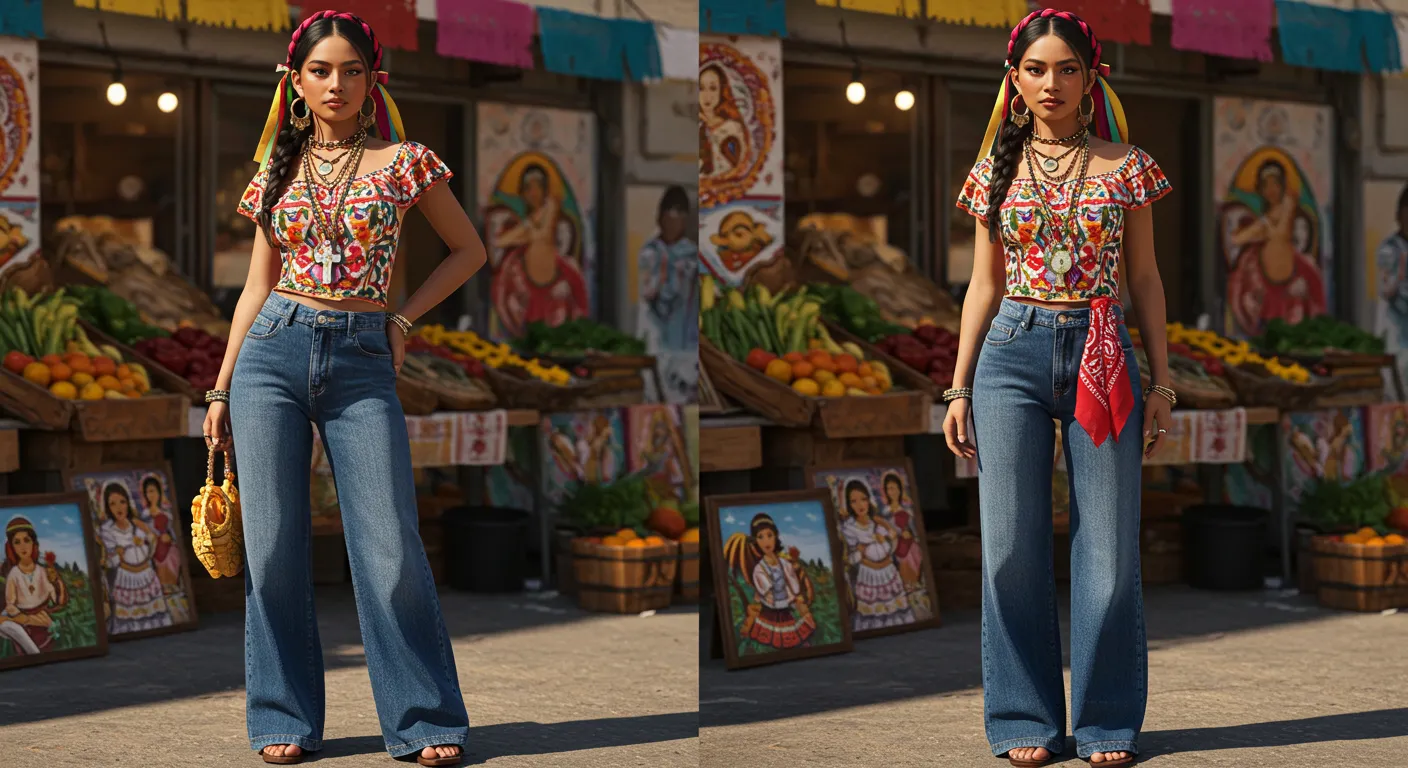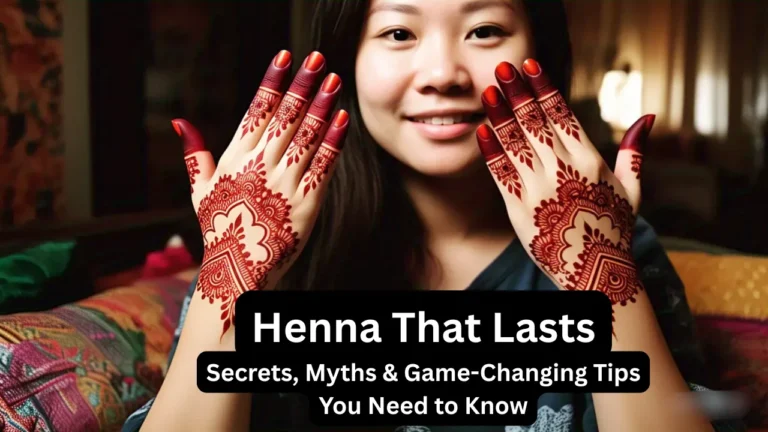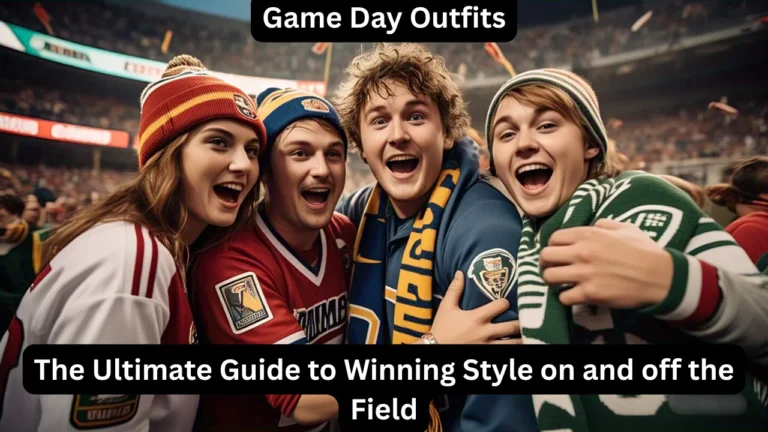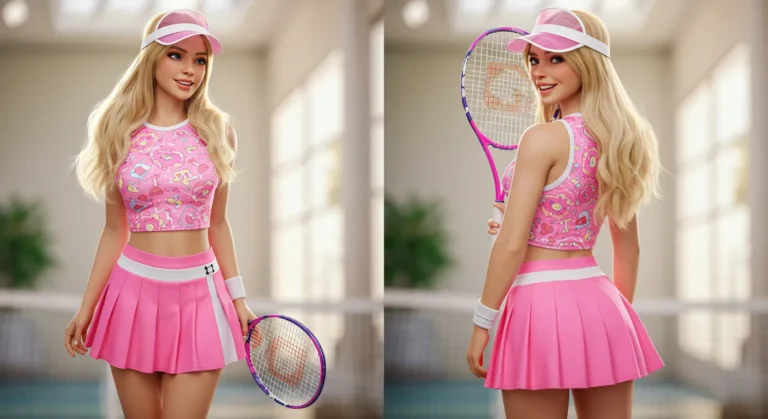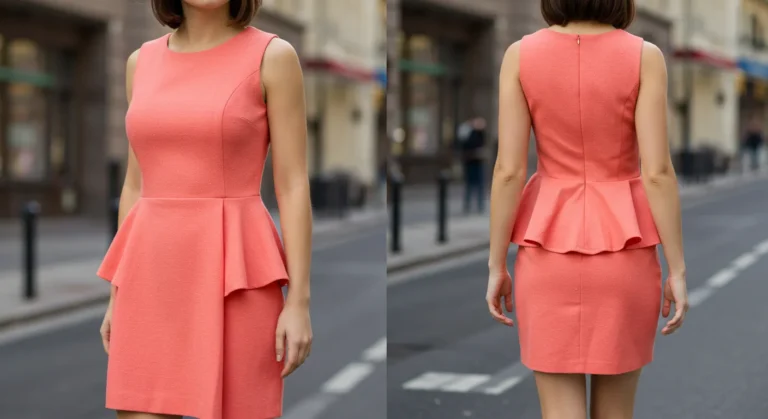best Chicano Fashion The Bold Legacy of Style in 2025
Introduction
Chicano fashion isn’t just about clothes — it’s a movement, a cultural identity, and a form of bold self-expression that tells the world where you come from and what you stand for. Rooted in the Mexican-American communities of the Southwest, particularly Los Angeles, Chicano style has evolved over decades into a vibrant visual language. It’s deeply intertwined with street culture, resistance, pride, and power — a lifestyle that’s now gaining mainstream attention while staying true to its rebellious roots.
Today, Chicano fashion is no longer limited to barrio blocks or lowrider meets — it’s a global streetwear phenomenon. From international fashion runways to viral TikTok transformations, Chicano aesthetics are making waves. The resurgence isn’t just a trend — it’s a reclaiming of space, culture, and influence in an industry that has long borrowed from marginalized communities without giving proper credit.
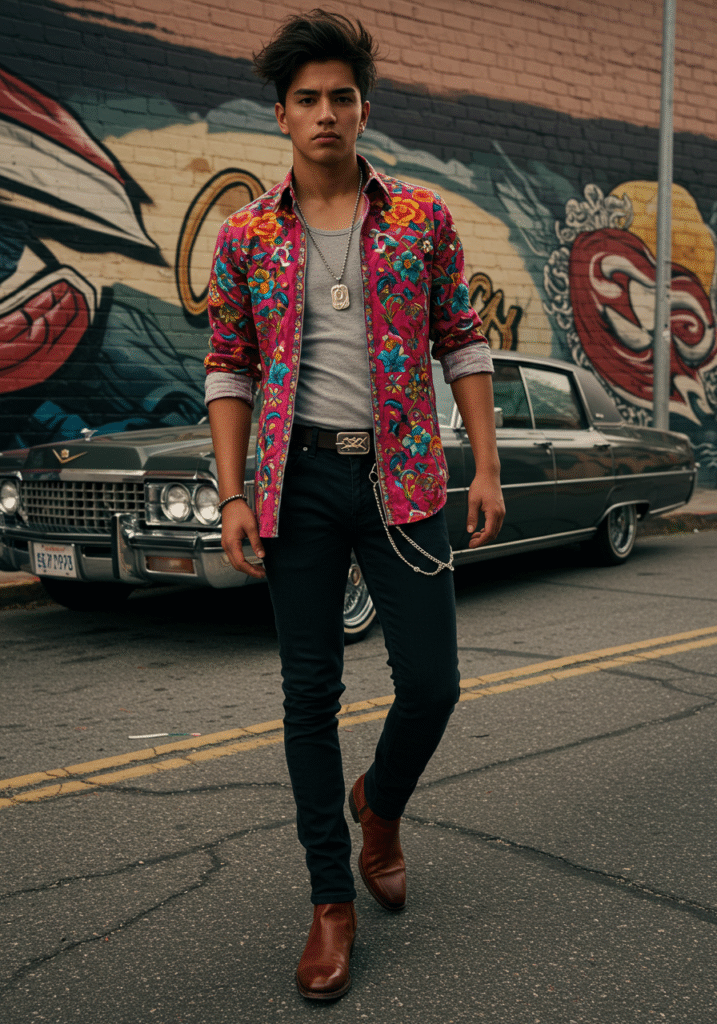
Part of the reason Chicano fashion is thriving in 2025 is because of its authenticity. In a world that constantly recycles trends, this style remains raw, unapologetic, and deeply personal. The oversized flannels, white tank tops, Dickies pants, Nike Cortez sneakers, slicked-back hair, and statement tattoos — these aren’t random pieces. They’re coded symbols that speak volumes about identity, loyalty, and a love for heritage.
The fashion industry, now heavily influenced by Gen Z and digital creators, is embracing Chicano fashion’s bold silhouettes and street-smart edge. Influencers are pairing traditional looks with modern twists, like layering flannel shirts over crop tops or mixing bandanas with luxury accessories. This new wave of fusion is breathing fresh life into a culture that’s always been about community, resistance, and self-respect.
But while the spotlight is welcomed, it also comes with a responsibility to honor the roots. Chicano fashion wasn’t born in a designer’s studio — it was born in resistance, struggle, and pride. Every crease in a pair of khakis and every tattoo tells a story. To wear this style without knowing its meaning is to miss the heart of what Chicano fashion truly represents.
This guide is designed to take you deep into the world of Chicano fashion — not just the looks, but the legacy. From the historical roots to the new-wave digital revival, you’ll discover why this fashion isn’t just a statement — it’s a declaration.
Whether you’re here to learn, dress with purpose, or understand the impact Chicano fashion has had on global style, this article is your ultimate guide.
Cultural Roots
To understand Chicano fashion, you must first understand Chicano identity — a term born from resistance, pride, and a fight for recognition. The word “Chicano” came into mainstream use during the Chicano Movement of the 1960s and 1970s, when Mexican-Americans in the U.S., particularly in California and the Southwest, began asserting their cultural identity, pushing back against discrimination, and demanding civil rights.
Fashion became one of the most visible ways for Chicanos to communicate who they were — not assimilated, not foreign, but something unique: a blend of indigenous Mexican heritage and urban American experience. Clothing choices became symbols of pride and defiance. What started as street uniforms of marginalized youth transformed into a powerful cultural language — one that stood up to societal rejection with unwavering style.
The cultural foundation of Chicano fashion lies in tradition. Men drew influence from Mexican pachucos of the 1940s, known for their zoot suits, wide trousers, and sharp haircuts — all worn with defiance. Chicanos in the ’70s and ’80s adapted this with street modifications: Dickies instead of slacks, Pendleton shirts instead of dress coats, and clean fades replacing pompadours. These changes represented a cultural evolution — a remix of the old school with the street edge.
Women in the Chicano movement also used fashion as resistance. Chicanas developed their own signature look, balancing femininity with toughness: plucked eyebrows, bold eyeliner, flannel shirts worn open over tight tops, and hoop earrings. Their appearance was never just about fashion — it was about owning space in a world that tried to silence them.
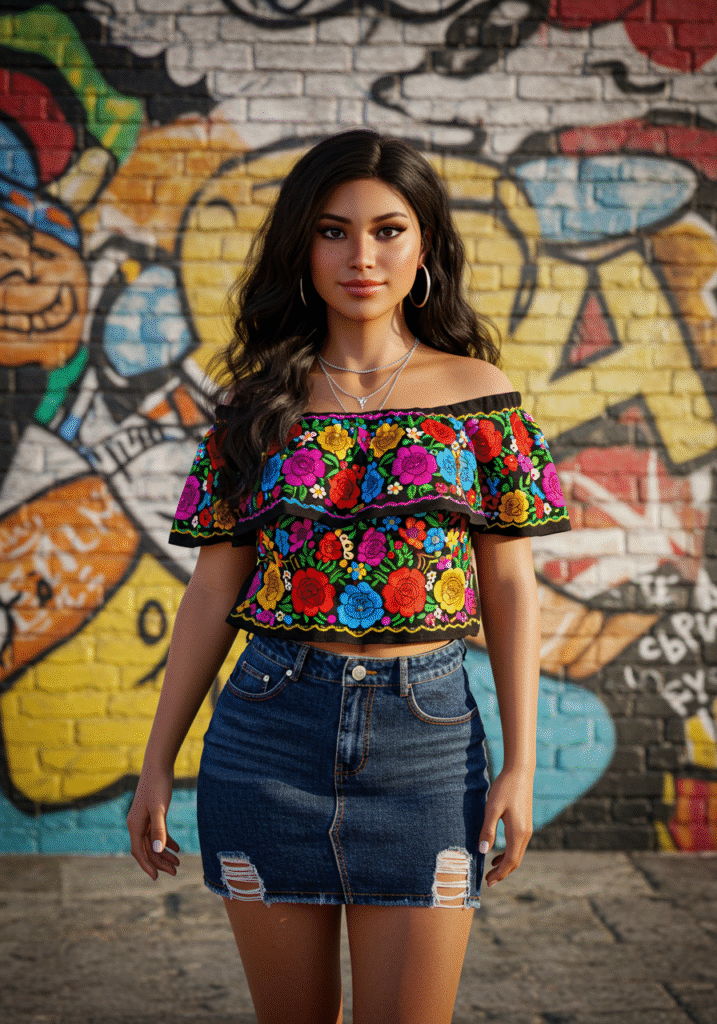
Over the years, Chicano fashion absorbed elements from gang culture, lowrider clubs, carne asada hangouts, and protest marches. It was a way of saying, “This is who I am, and you can’t erase me.” Every article of clothing became a symbol: white tank tops for unity, pressed khakis for discipline, bandanas for neighborhood allegiance, and tattoos that told generational stories.
Today, these cultural roots are still visible in modern Chicano fashion — proving that style, when rooted in history, never fades.
Key Elements of Chicano Fashion
Chicano fashion has signature elements that make it instantly recognizable. These aren’t just fashion choices — they are cultural identifiers, each piece rich with meaning and legacy. Whether worn by OGs from the barrios or new-age creators on TikTok, these style pieces remain central to the aesthetic.
1. Bandanas:
Arguably the most iconic Chicano accessory, the bandana is often worn tied around the forehead or folded and tucked into a back pocket. In classic Chicano style, black, red, or navy blue paisley prints dominate. Bandanas can signal pride, affiliation, or simply function as a nod to tradition. In the modern fashion world, influencers wear them as headwraps or neck scarves, adding contemporary flair to a timeless symbol.
2. Dickies & Khakis:
You can’t talk about Chicano fashion without mentioning Dickies work pants or pressed khakis. Originally embraced for their durability and affordability, they became a symbol of order and pride. Chicanos often wore them with a perfect crease down the front — a visual sign of discipline and control in environments often filled with chaos.
3. White Tank Tops (A-Shirts):
These basic undershirts, often paired with oversized flannels, are essential. Known colloquially as “wife beaters” in popular culture (though this term is now rightly criticized), they represent simplicity and strength. When worn under an open plaid shirt or Pendleton, it completes the signature Chicano layering effect.
4. Flannel Shirts & Pendletons:
Classic button-up flannel shirts, especially Pendleton brand, are worn buttoned only at the top or left completely open. This style dates back to the early 90s and has become a staple for both men and women. The look blends West Coast cool with indigenous patterns, bringing both comfort and legacy.
5. Nike Cortez or Converse Sneakers:
Footwear completes the look. Nike Cortez, originally released in 1972, quickly became a staple in Chicano neighborhoods. Paired with long socks and cuffed pants, they’re sleek and bold — just like the culture. Converse Chuck Taylors are another classic, worn often in black or white.
6. Hair and Tattoos:
Chicano men typically wear slicked-back hair, low fades, or shaved designs, while women rock teased hair, baby bangs, or gelled styles. Tattoos play a massive role — from religious symbols to Aztec warriors and Virgin Mary portraits — telling stories of heritage, loyalty, and family.
Chicano fashion is not just about wearing the clothes — it’s about wearing the code. Each piece carries history, rules, and meaning. And yet, these staples are also incredibly adaptable, evolving with each generation while maintaining their core DNA.
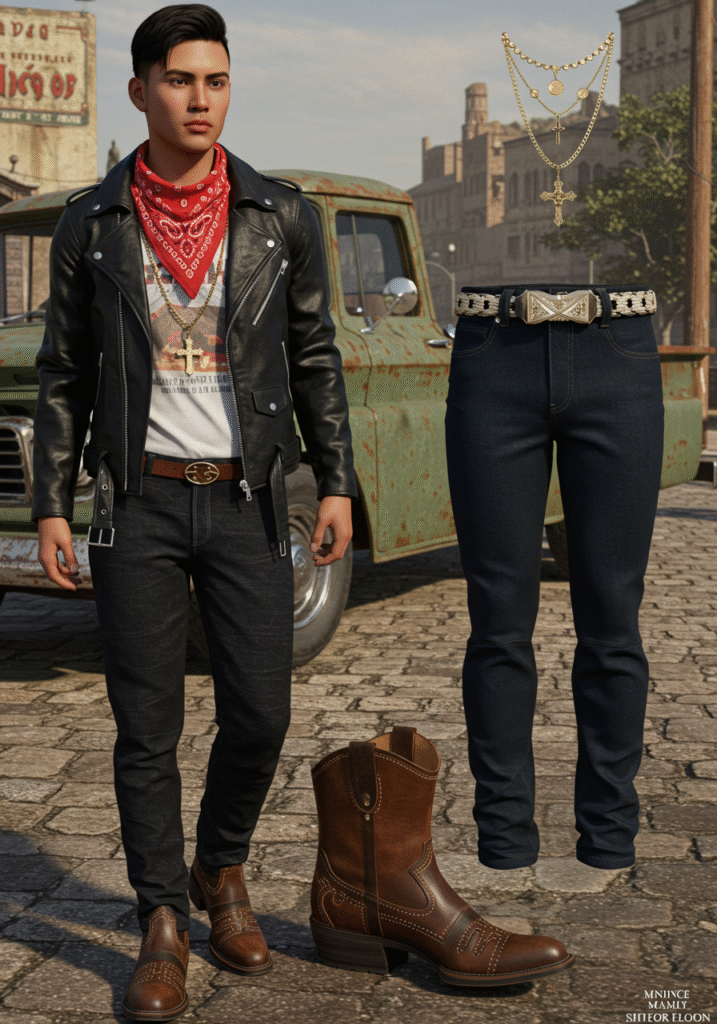
The Cholo Aesthetic
The Cholo aesthetic is one of the most visually powerful branches of Chicano fashion — a look that merges street swagger with cultural pride, discipline, and bold defiance. While “cholo” is sometimes misused in pop culture, it represents a distinct and deeply influential fashion identity in Chicano history.
The term “cholo” has roots tracing back to colonial times, but in modern culture, it’s been reclaimed by Mexican-American communities to represent a unique subcultural identity. The cholo look began forming in urban neighborhoods of California in the 1970s and ‘80s, where young men and women used fashion as a way to project strength, unity, and cultural pride — often in the face of social and economic hardship.
The Style Breakdown:
Cholos are easily identified by their ultra-clean, sharply defined style. Every detail is intentional. A pressed, oversized pair of khakis paired with a crisp white tee or tank top is the foundation. Over that, a flannel shirt — always buttoned at the top — adds structure and attitude. A webbed belt, long white socks, and a pair of polished sneakers (Cortez or Converse) complete the uniform.
Accessories matter. Bandanas tied neatly, often around the forehead or worn over the face, aren’t just fashion — they signal strength and identity. Cholos may wear sunglasses, thin gold chains, or crosses, adding a mix of street and spiritual symbolism. The overall vibe? Controlled chaos — rough backgrounds met with polished presentation.
Haircuts and Posture:
The cholo aesthetic extends to grooming and body language. A low fade or clean buzzcut, sometimes with shaved-in designs, adds sharpness. For women — known as cholas — the look includes dark lip liner, arched brows, and hoop earrings. Their outfits may feature crop tops, baggy jeans, or even fitted dresses paired with flannels and combat boots.
It’s important to recognize that the cholo aesthetic has historically been misrepresented in media, often associated only with gangs or violence. In reality, it represents cultural pride, resistance to systemic inequality, and the beauty of maintaining order and dignity in a world that often offers the opposite.
In 2025, the cholo aesthetic is being reinterpreted through fashion designers, streetwear brands, and influencers who honor its roots while bringing it into the future. From luxury collaborations with Chicano tattoo artists to viral fashion reels showing “OG fits,” the style remains bold, unmistakable, and timeless.
Influence of Music and Lowrider Culture
You cannot talk about Chicano fashion without discussing the powerful influence of music and lowrider culture. These two elements are more than just entertainment or aesthetics — they’re the heartbeat of Chicano identity, and they’ve shaped the fashion, values, and attitude of generations.
The Beat of the Barrio
Chicano music spans multiple genres — from Chicano rap and oldies to funk and lowrider soul. Artists like Kid Frost, Cypress Hill, Lil Rob, and MC Magic helped define the soundtrack of the streets. The lyrics often told stories of barrio life, family, loyalty, struggle, and pride. This music wasn’t just heard — it was worn. Chicano artists became visual icons, wearing the flannel shirts, khakis, bandanas, and Nike Cortez that defined their communities.
As music videos became more popular in the 90s and early 2000s, Chicano fashion reached wider audiences. Lowriders lined the backgrounds, women in sharp Chicana styles danced in sync, and rappers showcased outfits that would soon become global streetwear blueprints.
More recently, Chicano fashion has crossed genres — you’ll now see artists like Becky G, Doja Cat, and Tyga embracing Chicano elements in their visuals and styling. Whether it’s through hairstyle, clothing, or overall vibe, the influence is clear and unmistakable.
The Lowrider Lifestyle
Lowrider culture is another cornerstone of Chicano pride — and it directly influenced how people dressed. Born in the 1940s and flourishing through the 70s and 80s, lowrider culture revolved around heavily customized classic cars: hydraulics, candy paint jobs, chrome wheels, and hand-painted murals of Aztec warriors or La Virgen de Guadalupe.
The men and women who built and rode these cars dressed to match. Their fashion had to reflect the same level of care, detail, and pride as their vehicles. You’d often see clean button-downs, creased pants, and coordinated colors to match the car. The look was intentional, polished, and smooth — a visual extension of the lowrider’s flow.
Clubs like Majestics, Oldies Car Club, and Lifestyle helped maintain standards — not just in cars, but in conduct and dress. Their influence on the Chicano style code can still be seen today in streetwear fashion inspired by car show aesthetics.
A Living Culture
Even now, lowrider events remain central gathering places for the Chicano community, showcasing not just cars but fashion, music, and culture. Families come dressed in their best — OGs in vintage flannels and Stacy Adams shoes, kids in mini Cholo fits, and women in glamorous Chicana styles.
The rhythm of old-school funk and West Coast rap continues to influence what Chicano fashion looks like today: polished, powerful, and always personal.
Chicana Women and Fashion
While men’s Chicano fashion gets a lot of the spotlight, Chicana women have built a fashion legacy of their own — one that’s bold, beautiful, and fiercely independent. From their signature makeup to iconic outfits, Chicanas have always been style pioneers, pushing the boundaries of what it means to be both feminine and fearless.
Signature Beauty and Makeup
The Chicana beauty look is instantly recognizable: bold, dark lip liner, filled-in with lighter lipstick or gloss; razor-thin eyebrows, often drawn or tattooed; dramatic eyeliner, extending out with a sharp wing. This makeup wasn’t just about looks — it was about attitude and presence. It demanded attention and respect, especially in environments where Chicanas were often overlooked or underestimated.
This bold beauty trend, born in the 80s and 90s, is now making a huge comeback on platforms like TikTok and Instagram. Younger generations are recreating vintage Chicana makeup tutorials, adding their own modern touches but keeping the spirit alive.
Fashion That Speaks Volumes
Chicana fashion is an intentional mix of softness and strength. A classic look might include a fitted tank top, oversized flannel shirt, baggy Dickies pants, and hoop earrings — worn with confidence and pride. Many women also styled mini skirts, fishnet stockings, bandanas, and combat boots, creating a look that was edgy yet elegant.
Another common accessory? Tattoos — from names and religious symbols to fine-line portraits — often placed on the arms, chest, or neck. These tattoos told personal stories and added to the visual expression of resilience and identity.
Chicanas weren’t afraid to mix street style with glam. A high ponytail with gelled edges, bold gold jewelry, and detailed nail art became symbols of empowerment. These women proved you could be tough and stylish, rebellious and refined, all at the same time.
Modern Day Influence
Today, Chicana fashion is being celebrated more than ever. Influencers, fashion designers, and celebrities like Kat Von D, Becky G, and Snow Tha Product continue to honor and evolve the look. They showcase how Chicana style isn’t stuck in the past — it’s part of a living, breathing identity that continues to influence beauty and fashion globally.
How Chicano Fashion Made Its Mark
Once a hyper-localized style of the barrios, Chicano fashion has become a global streetwear force — influencing designers, celebrities, and youth cultures across continents. From Tokyo to London, and São Paulo to Paris, fashion communities are embracing Chicano-inspired silhouettes, aesthetics, and attitude.
Global Adoption of Chicano Elements
What makes Chicano fashion globally appealing is its strong visual identity and message of pride and resistance. Fashion communities in Japan, for example, have adopted the lowrider and Cholo aesthetic with incredible dedication. Japanese subcultures like Chicano Japan have not only recreated the look but deeply studied the culture, music, and even language.
In Europe, brands are pulling from Chicano iconography — using bold fonts, religious motifs, and West Coast vibes in their streetwear drops. The oversized fits, plaid shirts, and workwear styling align perfectly with the fashion-forward street scenes in cities like Berlin, Milan, and London.
In Latin America, Chicano fashion has become a source of cultural pride — particularly among Mexican and Central American youth seeking to reconnect with their roots in a stylish, empowered way.
Streetwear Brands and High Fashion
Many streetwear brands, both underground and mainstream, are now referencing Chicano fashion directly. From small independent labels in L.A. to major names like Supreme and Nike collaborating with Chicano artists and tattoo designers, the influence is undeniable.
Even high fashion houses have started featuring elements that nod to Chicano style — oversized silhouettes, old-school haircuts, and graffiti prints inspired by L.A. barrios. Designers have realized that Chicano fashion tells a story — and storytelling is the future of fashion.
The Power of Social Media
Platforms like TikTok, Instagram, and Pinterest have played a major role in spreading Chicano fashion. Viral challenges like “OG Fit Check,” nostalgic reels of 90s barrio life, and makeup tutorials recreating the Chola look have reached millions of views. These visuals introduce global audiences to a style that’s not only cool but meaningful.
At the same time, Chicano creators are using these platforms to reclaim their narrative. They’re making sure that as the world embraces their fashion, it also understands the history behind it — the struggle, the beauty, the pride.
Chicano fashion may have started on street corners and backyard barbecues, but today, it’s walking down international runways and lighting up the screens of Gen Z worldwide.
It’s not just fashion. It’s a global movement wrapped in West Coast heat.
Modern Revival
In today’s hyper-connected world, fashion moves fast — but few styles have made a digital comeback as powerfully as Chicano fashion. Thanks to platforms like TikTok, Instagram, and YouTube, a new generation is rediscovering, redefining, and reclaiming the iconic Chicano look — and doing so with cultural respect, creativity, and fierce originality.
TikTok’s Role in Reviving Chicano Style
TikTok has become ground zero for Chicano fashion’s digital resurgence. What began as niche content — OG outfit breakdowns, “fit checks,” or Chola makeup tutorials — quickly exploded into a global trend. Hashtags like #ChicanoStyle, #OGFit, and #CholaMakeup have racked up millions of views, showcasing the movement’s visual power.
Young creators film themselves transforming into 90s-style cholos and cholas, pairing flannels with Dickies, bandanas with hoop earrings, and Nike Cortez with high socks. Often, they add classic soundtracks — think Roger & Zapp, Kid Frost, or WAR — giving the look a complete sensory experience.
But it’s not just aesthetics — TikTok has become a place for storytelling. Users share personal ties to the culture, family traditions, or their neighborhood histories. This blend of style and substance is what’s giving Chicano fashion its real staying power online.
Instagram and the Rise of Digital OGs
While TikTok delivers fast-paced visuals, Instagram brings the editorial feel. Chicano-style influencers curate polished grids filled with vintage-inspired photoshoots, throwback outfits, and cultural commentary. Pages like @chicano._aesthetic or @chicanxworldwide serve as digital archives, celebrating both classic and contemporary looks.
These feeds also act as cultural education — sharing quotes from activists like Cesar Chavez, showcasing Chicano murals, and honoring fallen icons of the movement. This gives the fashion deeper meaning — tying each flannel or tattoo back to its origin.
Instagram also fuels brand exposure, helping independent Chicano-owned labels thrive. From custom bandana-printed hoodies to handmade jewelry, the digital space is keeping the fashion local and authentic — even when it’s reaching global screens.
Reclaiming vs. Appropriating
The online popularity of Chicano fashion has reignited conversations around cultural appropriation. Some non-Chicano influencers have faced backlash for copying the style without understanding its roots, context, or struggles.
Thankfully, many Chicano creators are using their platforms to educate as well as inspire — ensuring that this fashion’s rebirth isn’t just about trend-chasing, but about cultural respect. It’s a beautiful thing to see — Gen Z fighting to preserve and elevate something their ancestors built from resistance.
A Style That Can’t Be Silenced
This new generation isn’t just copying Chicano fashion — they’re adding to it. They remix it with modern fits, gender-fluid expressions, bold color palettes, and tech-savvy marketing. It’s proof that Chicano fashion was never static — it has always evolved.
The internet didn’t just bring Chicano fashion back. It amplified its soul.
How to Style a Chicano-Inspired Outfit
While the heart of Chicano fashion lies in tradition, today’s interpretation is all about fusion — blending timeless elements with modern touches to create outfits that feel both nostalgic and fresh. Whether you want to pay tribute to the OGs or make the style your own, here’s how to rock Chicano fashion in 2025 with respect and swagger.
for Men
1. Start With the Base:
Grab a white tank top or plain white tee — clean, crisp, and fitted. This forms the foundation of the classic Cholo outfit.
2. Pants That Speak:
Pair it with Dickies work pants or baggy khakis, preferably in dark navy, beige, or charcoal. Iron in that signature center crease — it’s non-negotiable if you want the real look.
3. Shirts & Layers:
Throw on an oversized flannel shirt, left unbuttoned or buttoned only at the top. Classic Pendleton plaids work best — burgundy, navy, or hunter green.
4. Footwear:
Slip into a pair of Nike Cortez, Converse All Stars, or even Stacy Adams dress shoes for a more formal Chicano touch.
5. Accessories:
Add a bandana tied around the forehead or worn from the back pocket. Top it off with a clean fade haircut, thin gold chain, and tattoos (real or temporary) for full effect.
For Women
1. Makeup Game Strong:
Chicana makeup is iconic — start with razor-thin brows, black winged eyeliner, and dark lip liner with nude or gloss center. Add gold hoops and dramatic lashes.
2. The Fit:
Pair a tight crop top or tank with oversized Dickies or high-waisted jeans. Tuck in your top and show off your belt — often a webbed or leather statement piece.
3. Layer Like a Queen:
Add an open flannel shirt, denim jacket, or even a vintage bomber. The idea is balance — fitted below, oversized above.
4. Accessories & Hair:
Hoop earrings, nameplate necklaces, and bandanas are all staples. Hair can be gelled into a slick ponytail, parted in the middle with baby hairs styled, or teased high for volume.
5. Shoes:
Classic sneakers like Vans or Nike Cortez, or platform sandals if you’re mixing in glam.
Style with Substance
More than just outfits, Chicano fashion is about presence — standing tall, walking proud, and repping where you’re from. It’s important to wear it with respect, not parody. Learn the history, understand the roots, and let your style reflect not just trendiness — but honor.
Is Chicano Fashion a Trend or a Movement?
In a time when fashion trends change by the week, it’s fair to ask: Is Chicano fashion just another retro revival, or is it a deeper, lasting cultural movement? The answer is clear — Chicano fashion is not a trend. It’s a movement rooted in resistance, pride, and identity.
Style Born from Struggle
Unlike many fashion fads created in runways or studios, Chicano fashion came from the streets, schools, prisons, and homes of Mexican-American communities. It was a response to systemic oppression — a way of saying, “You can overlook us, but you can’t erase us.” That kind of origin story isn’t something that fades with time — it strengthens.
Fashion trends come and go. But movements are passed down.
it’s About More Than Clothes
At its core, Chicano fashion is about self-expression, solidarity, and story-telling. Every choice — from a bandana color to a tattoo placement — has layers of meaning. It communicates respect, loyalty, and legacy. That kind of style can’t be duplicated — only lived.
When someone wears Chicano fashion with knowledge and intention, they’re not just wearing clothes. They’re wearing a history of resistance, a celebration of roots, and a future of representation.
The Future Is Cultural Ownership
As Chicano fashion spreads globally, more creators and brands are emphasizing cultural ownership. This means supporting Chicano designers, buying from Latinx-owned labels, and giving credit where it’s due. It also means calling out appropriation, ensuring that fashion media doesn’t erase the culture behind the aesthetic.
Thankfully, platforms like TikTok, Instagram, and grassroots fashion communities are doing just that — preserving the message, amplifying the meaning, and keeping the movement strong.
More Inclusive, More Evolving
Modern Chicano fashion is also becoming more inclusive. Today’s movement includes non-binary, LGBTQ+, and differently-abled creators, all bringing new life to the tradition. The boundaries are expanding, but the roots remain sacred.
Chicano Accessories
No Chicano outfit is complete without the right accessories. From gold jewelry and pendants to wide bandanas and locs sunglasses, these iconic items are more than fashion embellishments—they’re statements of identity, culture, and resistance. Accessories play a defining role in bringing together the aesthetics of Chicano fashion and elevating it from mere streetwear to an intentional, cultural ensemble.
Jewelry is foundational in Chicano style. Thick gold chains, nameplate necklaces, and large hoop earrings are deeply rooted in Latino urban fashion, offering a sense of pride, resilience, and elegance. Gold and silver tones dominate, often personalized with initials or messages reflecting family, love, or struggle. Rings with Aztec motifs, crosses, and religious symbols serve not just aesthetic purposes but also spiritual and cultural ones.
Bandanas—especially in colors like red, blue, or black—are not just headwear; they represent neighborhoods, affiliations, and unity. Traditionally tied around the head or folded and worn around the neck, the bandana has become a powerful and recognizable feature of Chicano identity. It represents both style and solidarity in the face of cultural marginalization.
Eyewear in Chicano fashion also has distinct flair. The classic Locs sunglasses, with their thick, black rectangular frames, exude cool confidence and a no-nonsense attitude. Popularized in the West Coast hip-hop scene, these glasses have remained a staple in Chicano street fashion, often symbolizing rebellion, pride, and masculinity.
Other accessories such as leather belts with large buckles, embroidered handkerchiefs, and flannel-lined wallets help express an individual’s unique sense of style while staying rooted in the culture. Chicano fashion doesn’t follow fleeting trends; it adapts and transforms while maintaining deep cultural grounding. Each accessory tells a story—of history, heritage, and heart.
Chicano-Inspired Fashion Brands
In recent years, mainstream fashion has begun to embrace and collaborate with Chicano designers and influencers, bringing the aesthetic into the limelight. While some might fear commercialization, these collaborations have given voice to Chicano creatives who once existed on the margins of the industry.
Brands like Born x Raised, Dimepiece LA, and Pachuco Supply Co. are examples of how Chicano creatives are turning streetwear into platforms for storytelling and cultural expression. These labels often fuse vintage Cholo vibes with modern streetwear elements—think embroidered flannel shirts, bold graffiti fonts, and Day of the Dead-inspired graphics.
In terms of collaborations, major labels like Nike, Vans, and Dickies have partnered with Latino artists to create capsule collections that honor Chicano heritage. These drops often sell out quickly, not just because of their aesthetic value but also due to the growing appreciation for cultural authenticity.
One standout example is Nike’s Cortez x Mister Cartoon collaboration. Mister Cartoon, a legendary tattoo artist and visual storyteller from East LA, brought his street-style authenticity to a global brand. The result? A shoe line that embodies the soul of Chicano neighborhoods while reaching a new generation of consumers.
Moreover, social media influencers of Chicano descent, like @ChicanaBoss, @MrChicanoStyle, and @CholoFitCreeper, have transformed their platforms into digital runways, gaining hundreds of thousands of followers and bringing attention to the movement. These creators highlight how Chicano fashion is evolving—while never forgetting its roots.
Such efforts are redefining how Chicano fashion is perceived: not as an underground niche, but as a movement with global influence, driven by creators who stay true to their culture and community.
Chicano Fashion in the Beauty
Chicano fashion isn’t just about what you wear—it’s also about how you present yourself from head to toe. Beauty and grooming are key parts of the look, often carrying deep cultural significance. In both the Chicana and Chicano identities, grooming is a form of self-respect, pride, and statement-making.
For Chicanas, makeup has always been bold and expressive. Think dark lip liners paired with nude lipstick, dramatic eyeliner, long lashes, and heavily plucked or penciled-in eyebrows. This beauty aesthetic has roots in the 90s but continues to evolve, often influenced by both Chola fashion and modern glam trends. It’s unapologetic, powerful, and often defiant—especially in the face of Eurocentric beauty standards.
Hair is also critical. The slick-back high ponytail, teased bangs, or long, layered locks styled with mousse and hairspray are iconic within the Chicana community. These hairstyles reflect not only beauty preferences but also identity, often passed down through generations and shared in salons, barbershops, and bedrooms across communities.
For Chicanos, grooming is equally important. The fade haircut, complete with razor-sharp edges, is a signature. Paired with perfectly groomed mustaches or goatees, the Chicano look demands precision and care. Barbershops in Chicano neighborhoods are sacred spaces—places of culture, bonding, storytelling, and pride.
Tattoos also play a major role. From Virgen de Guadalupe pieces to script tattoos across the chest or arms, body art is both personal and cultural. It’s a wearable canvas of one’s identity, beliefs, and experiences.
Chicano grooming isn’t about conforming—it’s about standing tall and representing your roots. Whether you’re rocking a bold lip or a fresh fade, it’s an act of resistance, resilience, and pride.
FAQs
What is Chicano fashion?
Chicano fashion is a style rooted in the Mexican-American (Chicano) community, particularly in the U.S. Southwest. It blends traditional Mexican elements, urban streetwear, gang-inspired aesthetics, and cultural pride. Common features include Dickies pants, flannels, bandanas, gold jewelry, and Nike Cortez sneakers.
Is Chicano fashion only for Latinos?
While Chicano fashion originates from the Chicano community, anyone can appreciate and wear it — provided it’s done with respect and understanding of its cultural significance. It’s not just fashion; it’s history, identity, and resistance.
What’s the difference between Chicano and Cholo style?
Cholo style is often considered a sub-style within Chicano fashion. It’s typically associated with lowrider culture, tattoos, oversized clothing, and a tougher, street-inspired edge. Chicano fashion overall includes more variety — from traditional roots to contemporary reinterpretations.
What brands are inspired by Chicano fashion?
Several streetwear and luxury brands have embraced Chicano aesthetics, including Born x Raised, Mister Cartoon’s Joker Brand, and even mainstream brands like Nike and Supreme in limited collections. However, original Chicano-owned labels offer the most authentic representation.
Why is Chicano fashion important in today’s fashion world?
Chicano fashion challenges stereotypes, celebrates cultural pride, and serves as a voice for marginalized communities. In a time where authenticity and cultural storytelling are central to fashion, the Chicano style stands as a rich, vibrant force.
Conclusion
Chicano fashion is far more than a style trend — it’s an identity, a movement, and a living testament to a culture that refuses to be forgotten. From the barrios of East L.A. to the global fashion runways, Chicano fashion has cemented itself as one of the most powerful expressions of cultural pride, struggle, and resilience. It blends rebellion with refinement, attitude with artistry, and history with high fashion. This unique fusion is what sets it apart and keeps it relevant in today’s ever-evolving style ecosystem.
One of the most compelling aspects of Chicano fashion is its ability to evolve while remaining deeply rooted in cultural values. What began as expressions of resistance and cultural affirmation in the 1940s and 1950s with zoot suits and bandanas, has grown into a modern-day powerhouse of influence. Today’s Chicano style is embraced by musicians, streetwear designers, high-fashion brands, TikTok influencers, and cultural historians alike.
Importantly, the rise of Chicano fashion parallels the broader recognition of marginalized voices in fashion, where authenticity, storytelling, and heritage matter more than ever. Platforms like Instagram and YouTube have enabled young Chicanx creatives to showcase their style and reclaim their narrative, away from the historically negative stereotypes placed upon their communities. Whether it’s the slick sophistication of a lowrider outfit, the raw edge of gang-influenced attire, or the elegant nods to indigenous and Aztec patterns — every outfit tells a story.
In the broader context of lifestyle and identity, Chicano fashion also empowers individuals to embrace intersectionality — to be Mexican-American, urban, artistic, spiritual, and stylish all at once. This multidimensional identity challenges mainstream norms and opens the door to a more inclusive and diverse fashion industry. From the rise of Latino-owned streetwear brands to Chicanas redefining beauty norms in makeup and hair, the fashion scene is witnessing a cultural renaissance — and the Chicano movement is at the forefront.
Looking ahead, the future of Chicano fashion lies in its authenticity. As luxury brands attempt to borrow elements of this bold aesthetic, there is an ongoing conversation about cultural appropriation versus appreciation. For the Chicano community, this moment is a call to preserve, elevate, and innovate their style while keeping it true to its roots.
In essence, Chicano fashion is not a passing trend but a permanent voice in the fashion conversation. It represents creativity forged in adversity, elegance born from rebellion, and identity stitched into every fold. As long as there are stories to tell, neighborhoods to represent, and heritage to celebrate, Chicano fashion will not just survive — it will thrive.

